Value Management Report: Analysis of Apartment Construction Project
VerifiedAdded on 2023/03/17
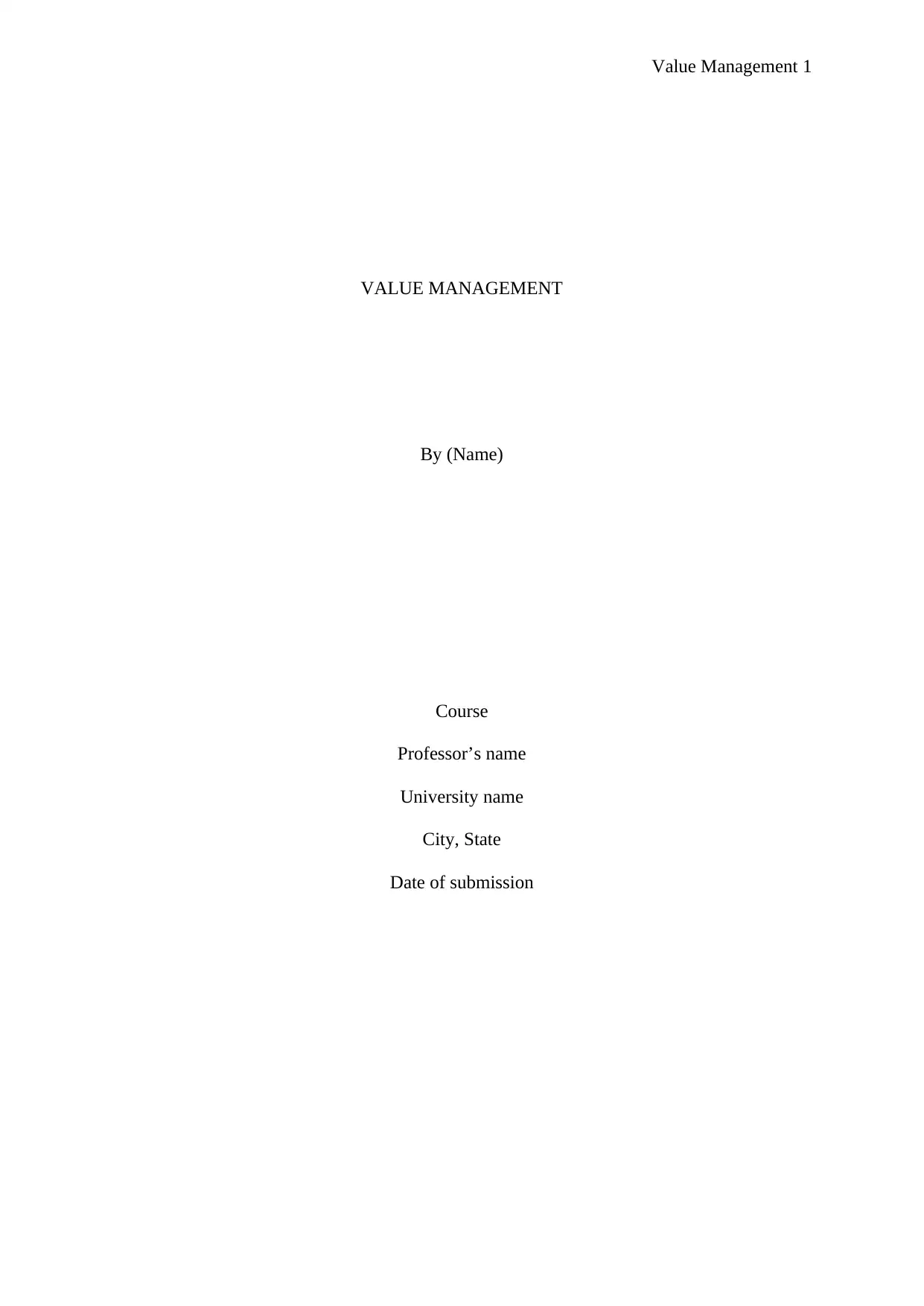
VALUE MANAGEMENT
By (Name)
Course
Professor’s name
University name
City, State
Date of submission
Paraphrase This Document
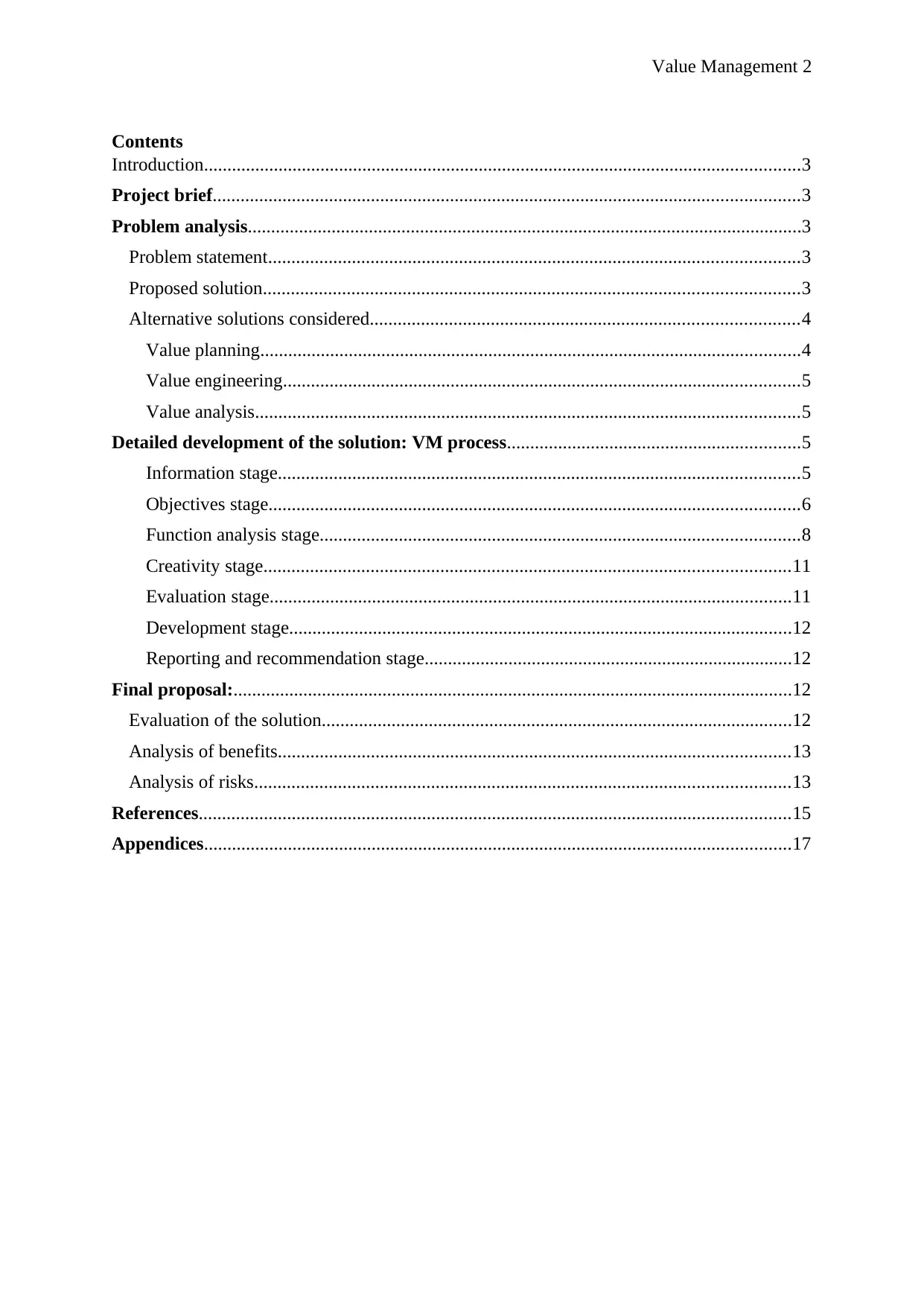
Contents
Introduction................................................................................................................................3
Project brief..............................................................................................................................3
Problem analysis.......................................................................................................................3
Problem statement..................................................................................................................3
Proposed solution...................................................................................................................3
Alternative solutions considered............................................................................................4
Value planning....................................................................................................................4
Value engineering...............................................................................................................5
Value analysis.....................................................................................................................5
Detailed development of the solution: VM process...............................................................5
Information stage................................................................................................................5
Objectives stage..................................................................................................................6
Function analysis stage.......................................................................................................8
Creativity stage.................................................................................................................11
Evaluation stage................................................................................................................11
Development stage............................................................................................................12
Reporting and recommendation stage...............................................................................12
Final proposal:........................................................................................................................12
Evaluation of the solution.....................................................................................................12
Analysis of benefits..............................................................................................................13
Analysis of risks...................................................................................................................13
References...............................................................................................................................15
Appendices..............................................................................................................................17
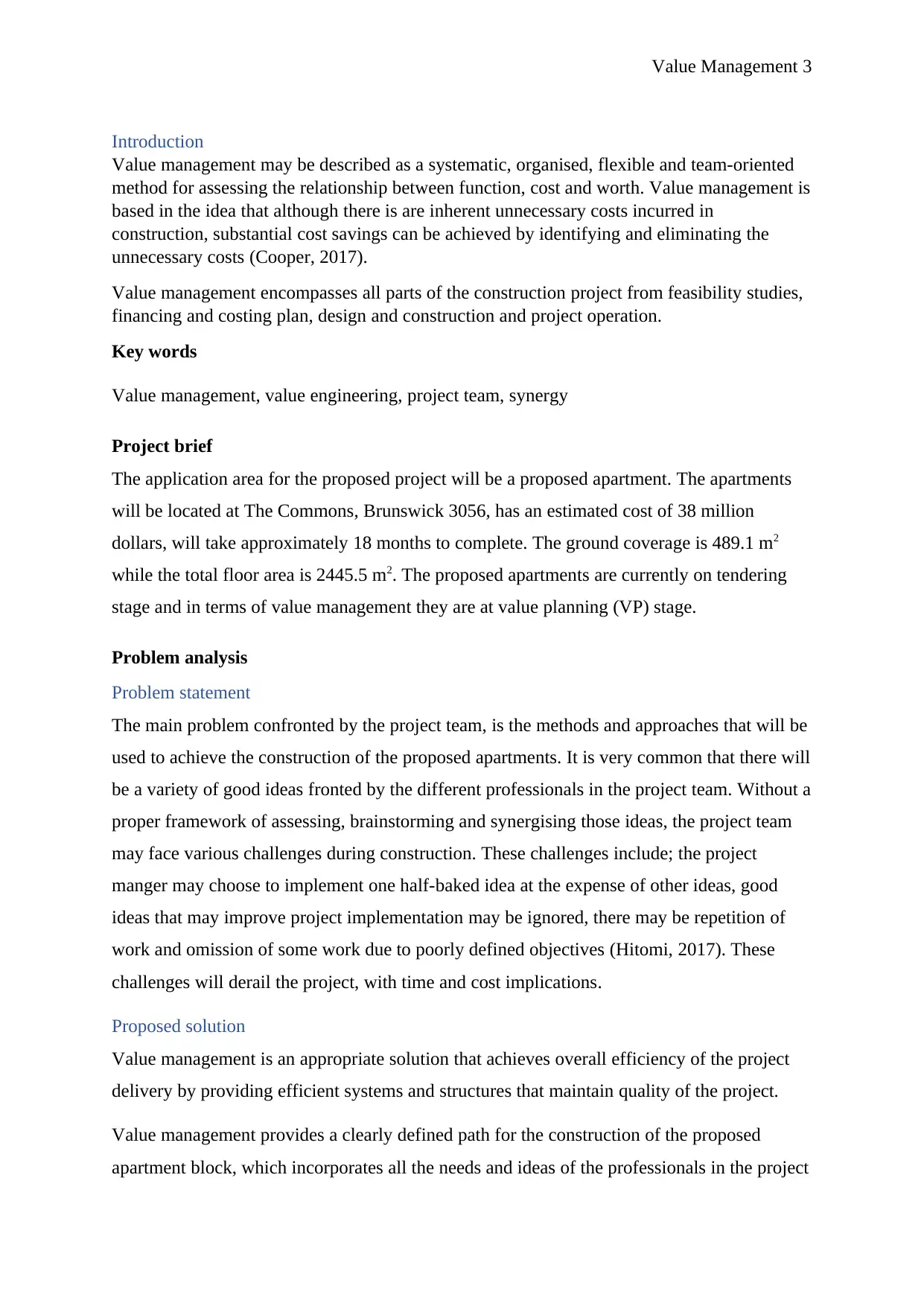
Introduction
Value management may be described as a systematic, organised, flexible and team-oriented
method for assessing the relationship between function, cost and worth. Value management is
based in the idea that although there is are inherent unnecessary costs incurred in
construction, substantial cost savings can be achieved by identifying and eliminating the
unnecessary costs (Cooper, 2017).
Value management encompasses all parts of the construction project from feasibility studies,
financing and costing plan, design and construction and project operation.
Key words
Value management, value engineering, project team, synergy
Project brief
The application area for the proposed project will be a proposed apartment. The apartments
will be located at The Commons, Brunswick 3056, has an estimated cost of 38 million
dollars, will take approximately 18 months to complete. The ground coverage is 489.1 m2
while the total floor area is 2445.5 m2. The proposed apartments are currently on tendering
stage and in terms of value management they are at value planning (VP) stage.
Problem analysis
Problem statement
The main problem confronted by the project team, is the methods and approaches that will be
used to achieve the construction of the proposed apartments. It is very common that there will
be a variety of good ideas fronted by the different professionals in the project team. Without a
proper framework of assessing, brainstorming and synergising those ideas, the project team
may face various challenges during construction. These challenges include; the project
manger may choose to implement one half-baked idea at the expense of other ideas, good
ideas that may improve project implementation may be ignored, there may be repetition of
work and omission of some work due to poorly defined objectives (Hitomi, 2017). These
challenges will derail the project, with time and cost implications.
Proposed solution
Value management is an appropriate solution that achieves overall efficiency of the project
delivery by providing efficient systems and structures that maintain quality of the project.
Value management provides a clearly defined path for the construction of the proposed
apartment block, which incorporates all the needs and ideas of the professionals in the project
⊘ This is a preview!⊘
Do you want full access?
Subscribe today to unlock all pages.

Trusted by 1+ million students worldwide
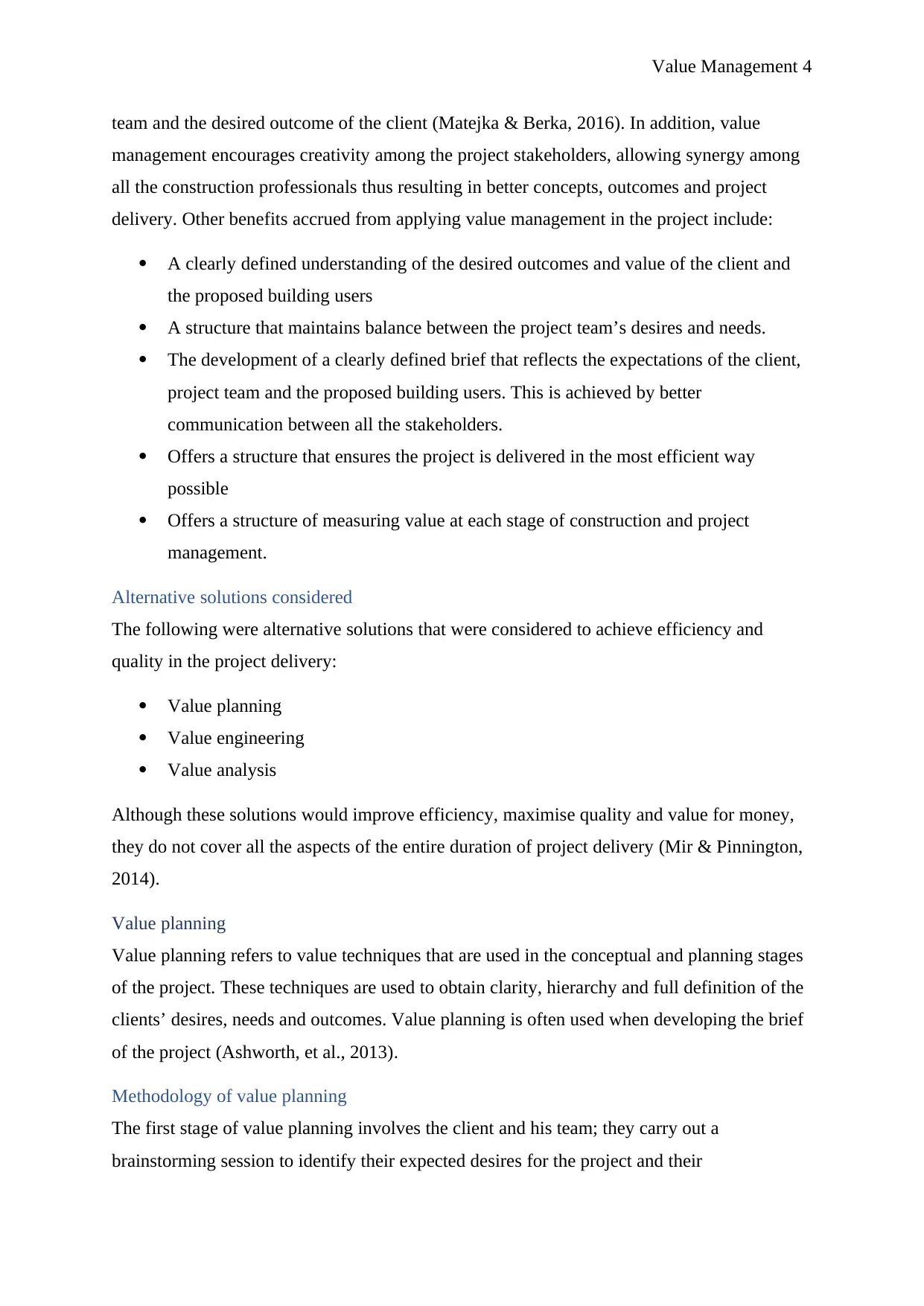
team and the desired outcome of the client (Matejka & Berka, 2016). In addition, value
management encourages creativity among the project stakeholders, allowing synergy among
all the construction professionals thus resulting in better concepts, outcomes and project
delivery. Other benefits accrued from applying value management in the project include:
A clearly defined understanding of the desired outcomes and value of the client and
the proposed building users
A structure that maintains balance between the project team’s desires and needs.
The development of a clearly defined brief that reflects the expectations of the client,
project team and the proposed building users. This is achieved by better
communication between all the stakeholders.
Offers a structure that ensures the project is delivered in the most efficient way
possible
Offers a structure of measuring value at each stage of construction and project
management.
Alternative solutions considered
The following were alternative solutions that were considered to achieve efficiency and
quality in the project delivery:
Value planning
Value engineering
Value analysis
Although these solutions would improve efficiency, maximise quality and value for money,
they do not cover all the aspects of the entire duration of project delivery (Mir & Pinnington,
2014).
Value planning
Value planning refers to value techniques that are used in the conceptual and planning stages
of the project. These techniques are used to obtain clarity, hierarchy and full definition of the
clients’ desires, needs and outcomes. Value planning is often used when developing the brief
of the project (Ashworth, et al., 2013).
Methodology of value planning
The first stage of value planning involves the client and his team; they carry out a
brainstorming session to identify their expected desires for the project and their
Paraphrase This Document
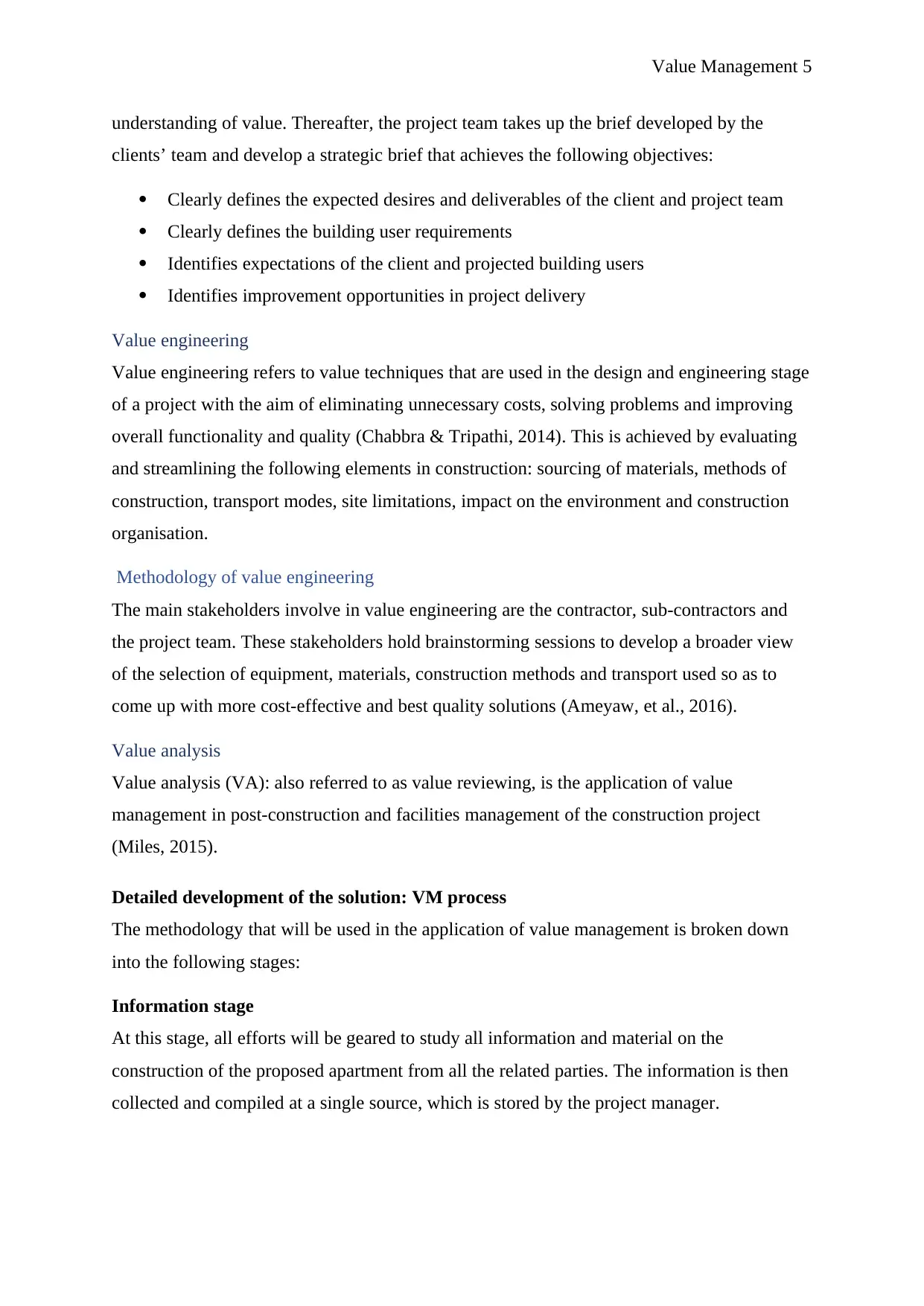
understanding of value. Thereafter, the project team takes up the brief developed by the
clients’ team and develop a strategic brief that achieves the following objectives:
Clearly defines the expected desires and deliverables of the client and project team
Clearly defines the building user requirements
Identifies expectations of the client and projected building users
Identifies improvement opportunities in project delivery
Value engineering
Value engineering refers to value techniques that are used in the design and engineering stage
of a project with the aim of eliminating unnecessary costs, solving problems and improving
overall functionality and quality (Chabbra & Tripathi, 2014). This is achieved by evaluating
and streamlining the following elements in construction: sourcing of materials, methods of
construction, transport modes, site limitations, impact on the environment and construction
organisation.
Methodology of value engineering
The main stakeholders involve in value engineering are the contractor, sub-contractors and
the project team. These stakeholders hold brainstorming sessions to develop a broader view
of the selection of equipment, materials, construction methods and transport used so as to
come up with more cost-effective and best quality solutions (Ameyaw, et al., 2016).
Value analysis
Value analysis (VA): also referred to as value reviewing, is the application of value
management in post-construction and facilities management of the construction project
(Miles, 2015).
Detailed development of the solution: VM process
The methodology that will be used in the application of value management is broken down
into the following stages:
Information stage
At this stage, all efforts will be geared to study all information and material on the
construction of the proposed apartment from all the related parties. The information is then
collected and compiled at a single source, which is stored by the project manager.
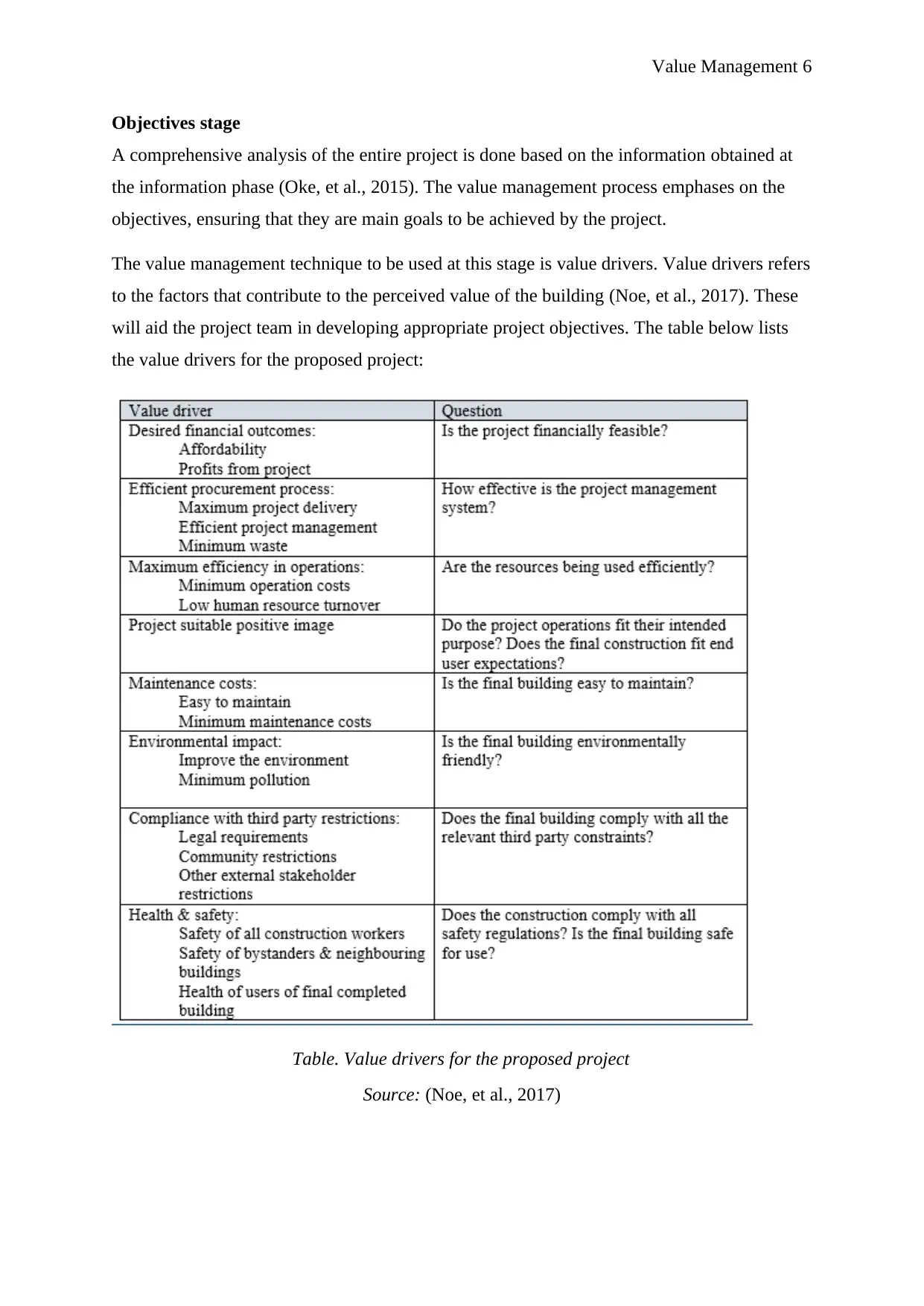
Objectives stage
A comprehensive analysis of the entire project is done based on the information obtained at
the information phase (Oke, et al., 2015). The value management process emphases on the
objectives, ensuring that they are main goals to be achieved by the project.
The value management technique to be used at this stage is value drivers. Value drivers refers
to the factors that contribute to the perceived value of the building (Noe, et al., 2017). These
will aid the project team in developing appropriate project objectives. The table below lists
the value drivers for the proposed project:
Table. Value drivers for the proposed project
Source: (Noe, et al., 2017)
⊘ This is a preview!⊘
Do you want full access?
Subscribe today to unlock all pages.

Trusted by 1+ million students worldwide
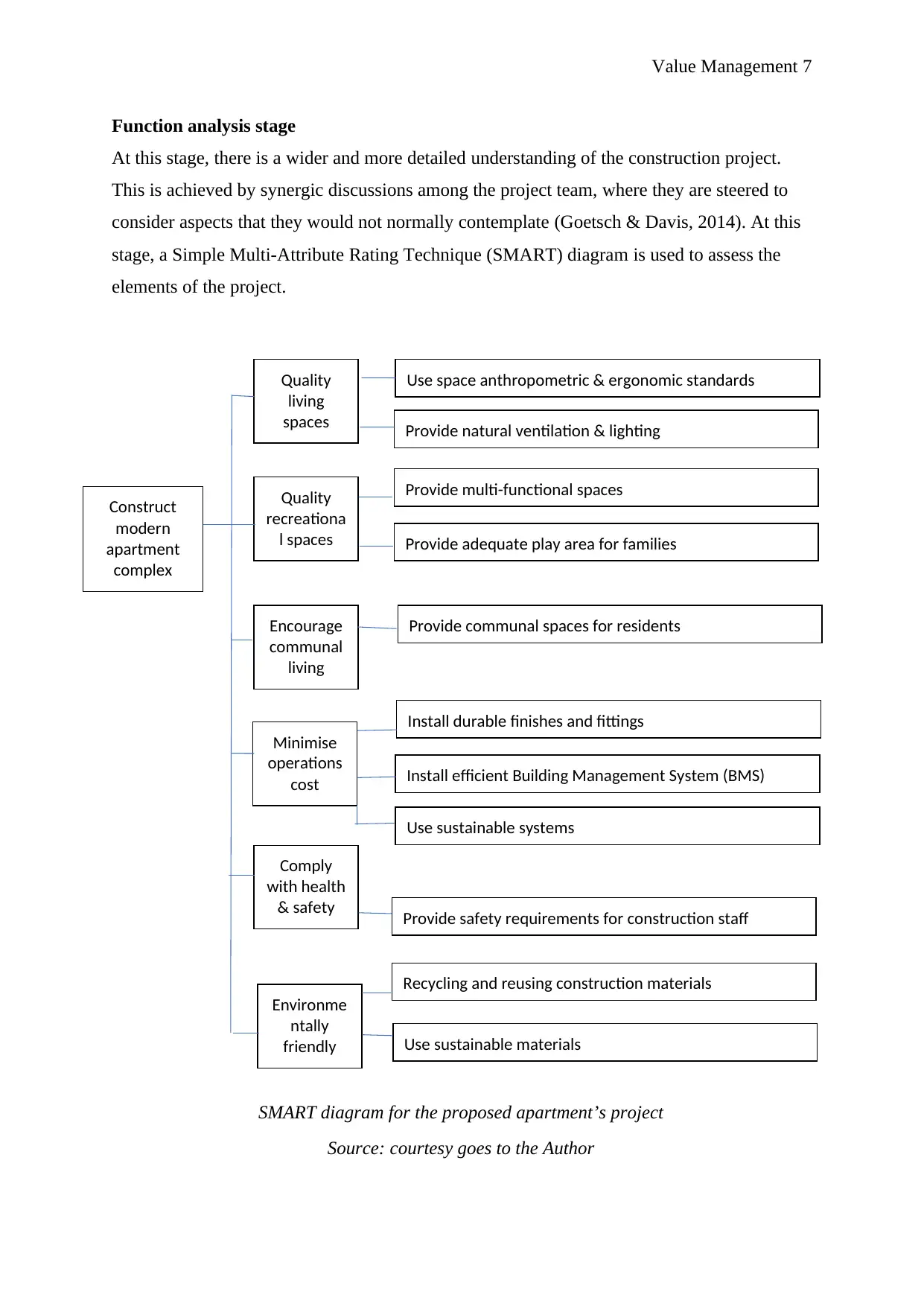
Function analysis stage
At this stage, there is a wider and more detailed understanding of the construction project.
This is achieved by synergic discussions among the project team, where they are steered to
consider aspects that they would not normally contemplate (Goetsch & Davis, 2014). At this
stage, a Simple Multi-Attribute Rating Technique (SMART) diagram is used to assess the
elements of the project.
SMART diagram for the proposed apartment’s project
Source: courtesy goes to the Author
Environme
ntally
friendly
Construct
modern
apartment
complex
Quality
living
spaces
Comply
with health
& safety
Quality
recreationa
l spaces
Encourage
communal
living
Minimise
operations
cost
Use space anthropometric & ergonomic standards
Provide natural ventilation & lighting
Provide multi-functional spaces
Provide adequate play area for families
Provide communal spaces for residents
Install durable finishes and fittings
Install efficient Building Management System (BMS)
Use sustainable systems
Recycling and reusing construction materials
Use sustainable materials
Provide safety requirements for construction staff
Paraphrase This Document
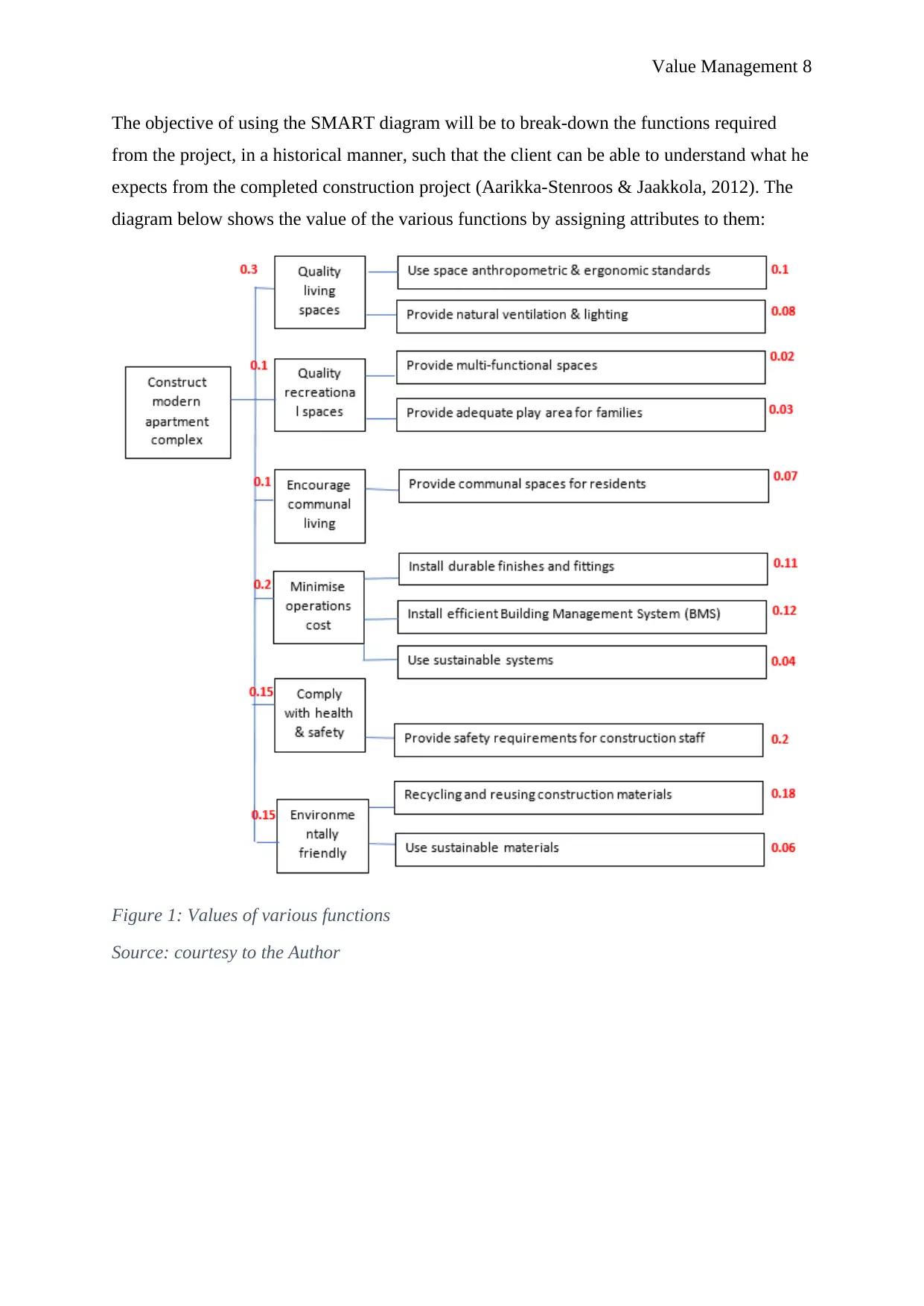
The objective of using the SMART diagram will be to break-down the functions required
from the project, in a historical manner, such that the client can be able to understand what he
expects from the completed construction project (Aarikka-Stenroos & Jaakkola, 2012). The
diagram below shows the value of the various functions by assigning attributes to them:
Figure 1: Values of various functions
Source: courtesy to the Author
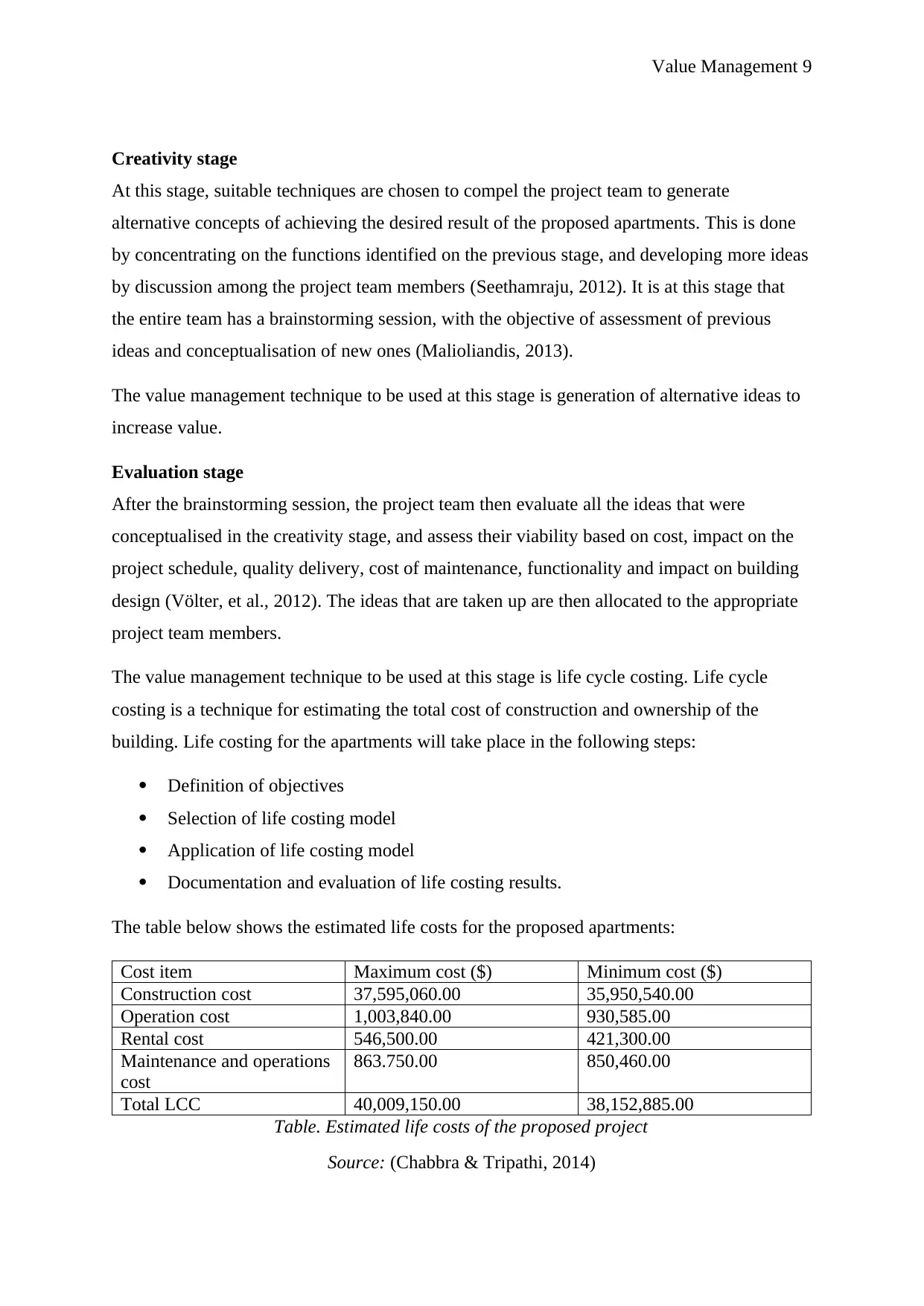
Creativity stage
At this stage, suitable techniques are chosen to compel the project team to generate
alternative concepts of achieving the desired result of the proposed apartments. This is done
by concentrating on the functions identified on the previous stage, and developing more ideas
by discussion among the project team members (Seethamraju, 2012). It is at this stage that
the entire team has a brainstorming session, with the objective of assessment of previous
ideas and conceptualisation of new ones (Malioliandis, 2013).
The value management technique to be used at this stage is generation of alternative ideas to
increase value.
Evaluation stage
After the brainstorming session, the project team then evaluate all the ideas that were
conceptualised in the creativity stage, and assess their viability based on cost, impact on the
project schedule, quality delivery, cost of maintenance, functionality and impact on building
design (Völter, et al., 2012). The ideas that are taken up are then allocated to the appropriate
project team members.
The value management technique to be used at this stage is life cycle costing. Life cycle
costing is a technique for estimating the total cost of construction and ownership of the
building. Life costing for the apartments will take place in the following steps:
Definition of objectives
Selection of life costing model
Application of life costing model
Documentation and evaluation of life costing results.
The table below shows the estimated life costs for the proposed apartments:
Cost item Maximum cost ($) Minimum cost ($)
Construction cost 37,595,060.00 35,950,540.00
Operation cost 1,003,840.00 930,585.00
Rental cost 546,500.00 421,300.00
Maintenance and operations
cost
863.750.00 850,460.00
Total LCC 40,009,150.00 38,152,885.00
Table. Estimated life costs of the proposed project
Source: (Chabbra & Tripathi, 2014)
⊘ This is a preview!⊘
Do you want full access?
Subscribe today to unlock all pages.

Trusted by 1+ million students worldwide
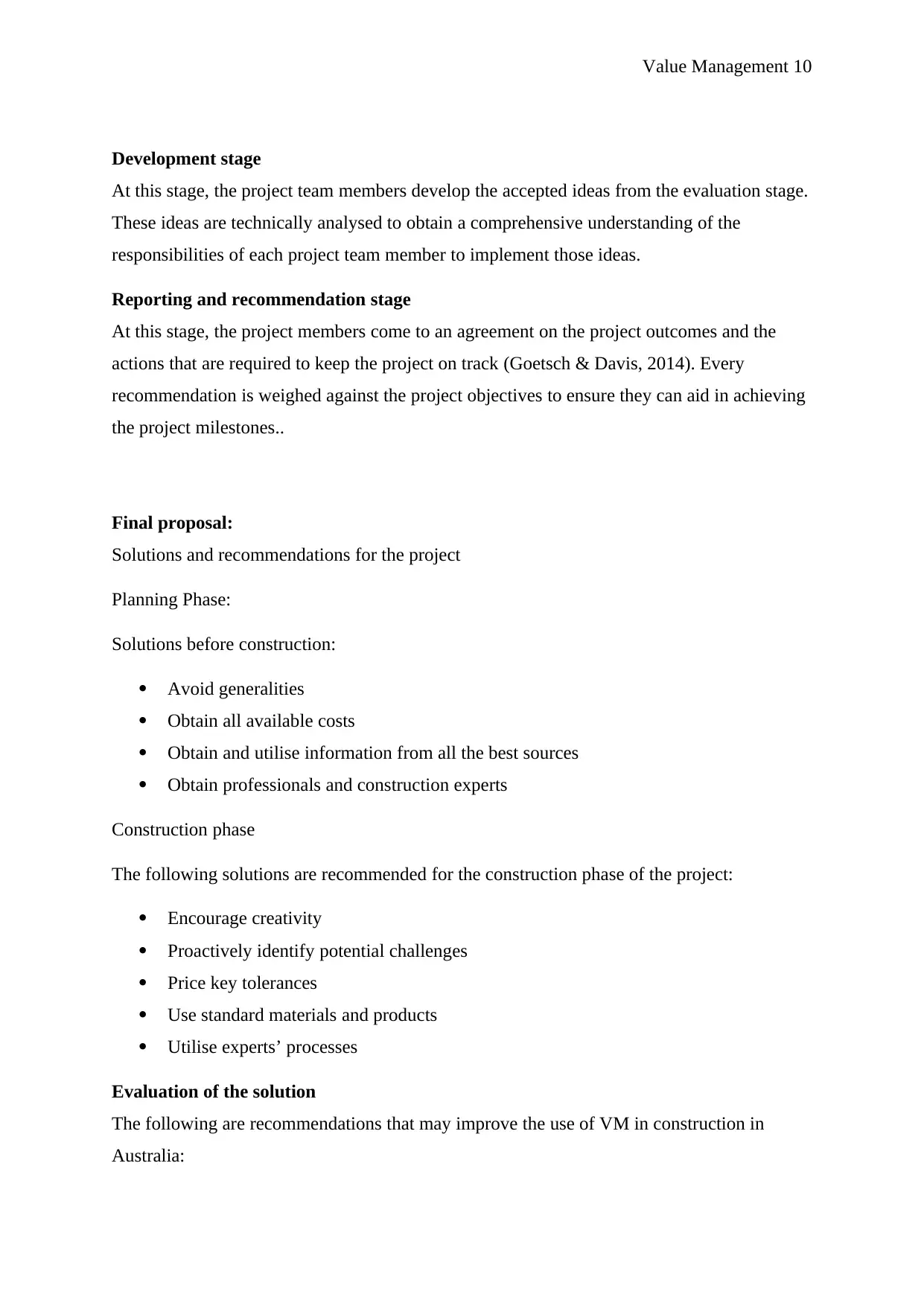
Development stage
At this stage, the project team members develop the accepted ideas from the evaluation stage.
These ideas are technically analysed to obtain a comprehensive understanding of the
responsibilities of each project team member to implement those ideas.
Reporting and recommendation stage
At this stage, the project members come to an agreement on the project outcomes and the
actions that are required to keep the project on track (Goetsch & Davis, 2014). Every
recommendation is weighed against the project objectives to ensure they can aid in achieving
the project milestones..
Final proposal:
Solutions and recommendations for the project
Planning Phase:
Solutions before construction:
Avoid generalities
Obtain all available costs
Obtain and utilise information from all the best sources
Obtain professionals and construction experts
Construction phase
The following solutions are recommended for the construction phase of the project:
Encourage creativity
Proactively identify potential challenges
Price key tolerances
Use standard materials and products
Utilise experts’ processes
Evaluation of the solution
The following are recommendations that may improve the use of VM in construction in
Australia:
Paraphrase This Document
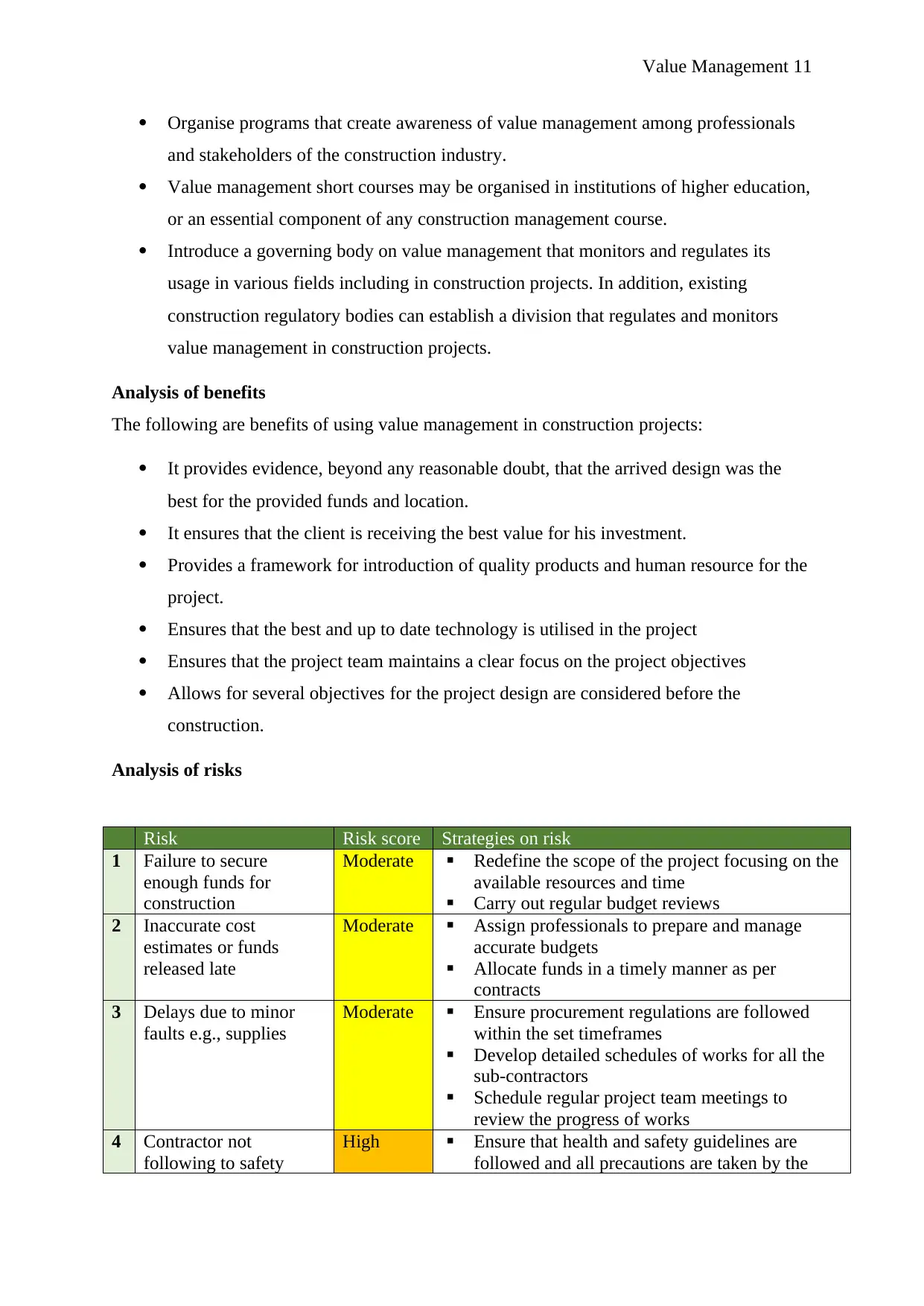
Organise programs that create awareness of value management among professionals
and stakeholders of the construction industry.
Value management short courses may be organised in institutions of higher education,
or an essential component of any construction management course.
Introduce a governing body on value management that monitors and regulates its
usage in various fields including in construction projects. In addition, existing
construction regulatory bodies can establish a division that regulates and monitors
value management in construction projects.
Analysis of benefits
The following are benefits of using value management in construction projects:
It provides evidence, beyond any reasonable doubt, that the arrived design was the
best for the provided funds and location.
It ensures that the client is receiving the best value for his investment.
Provides a framework for introduction of quality products and human resource for the
project.
Ensures that the best and up to date technology is utilised in the project
Ensures that the project team maintains a clear focus on the project objectives
Allows for several objectives for the project design are considered before the
construction.
Analysis of risks
Risk Risk score Strategies on risk
1 Failure to secure
enough funds for
construction
Moderate Redefine the scope of the project focusing on the
available resources and time
Carry out regular budget reviews
2 Inaccurate cost
estimates or funds
released late
Moderate Assign professionals to prepare and manage
accurate budgets
Allocate funds in a timely manner as per
contracts
3 Delays due to minor
faults e.g., supplies
Moderate Ensure procurement regulations are followed
within the set timeframes
Develop detailed schedules of works for all the
sub-contractors
Schedule regular project team meetings to
review the progress of works
4 Contractor not
following to safety
High Ensure that health and safety guidelines are
followed and all precautions are taken by the
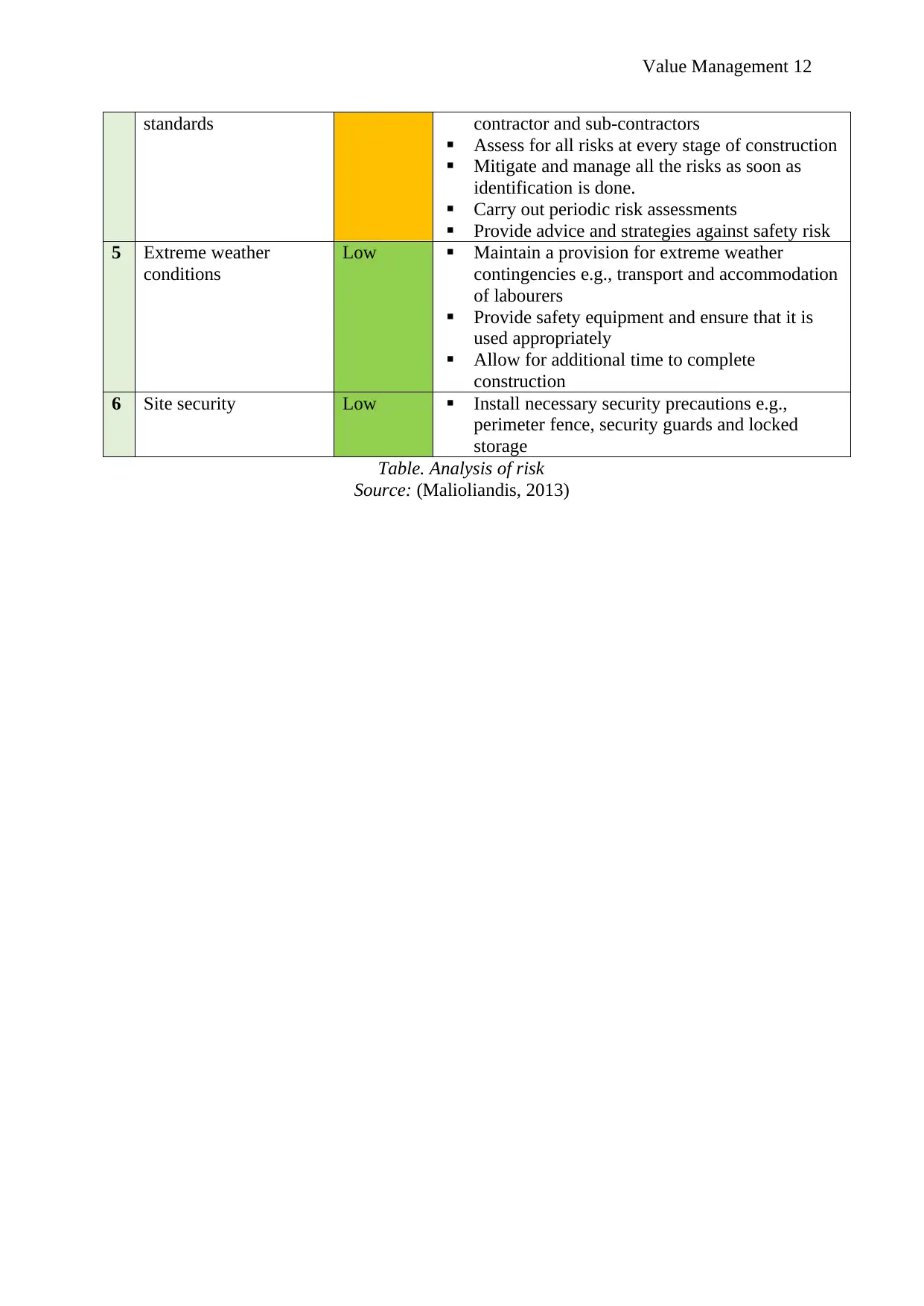
standards contractor and sub-contractors
Assess for all risks at every stage of construction
Mitigate and manage all the risks as soon as
identification is done.
Carry out periodic risk assessments
Provide advice and strategies against safety risk
5 Extreme weather
conditions
Low Maintain a provision for extreme weather
contingencies e.g., transport and accommodation
of labourers
Provide safety equipment and ensure that it is
used appropriately
Allow for additional time to complete
construction
6 Site security Low Install necessary security precautions e.g.,
perimeter fence, security guards and locked
storage
Table. Analysis of risk
Source: (Malioliandis, 2013)
⊘ This is a preview!⊘
Do you want full access?
Subscribe today to unlock all pages.

Trusted by 1+ million students worldwide
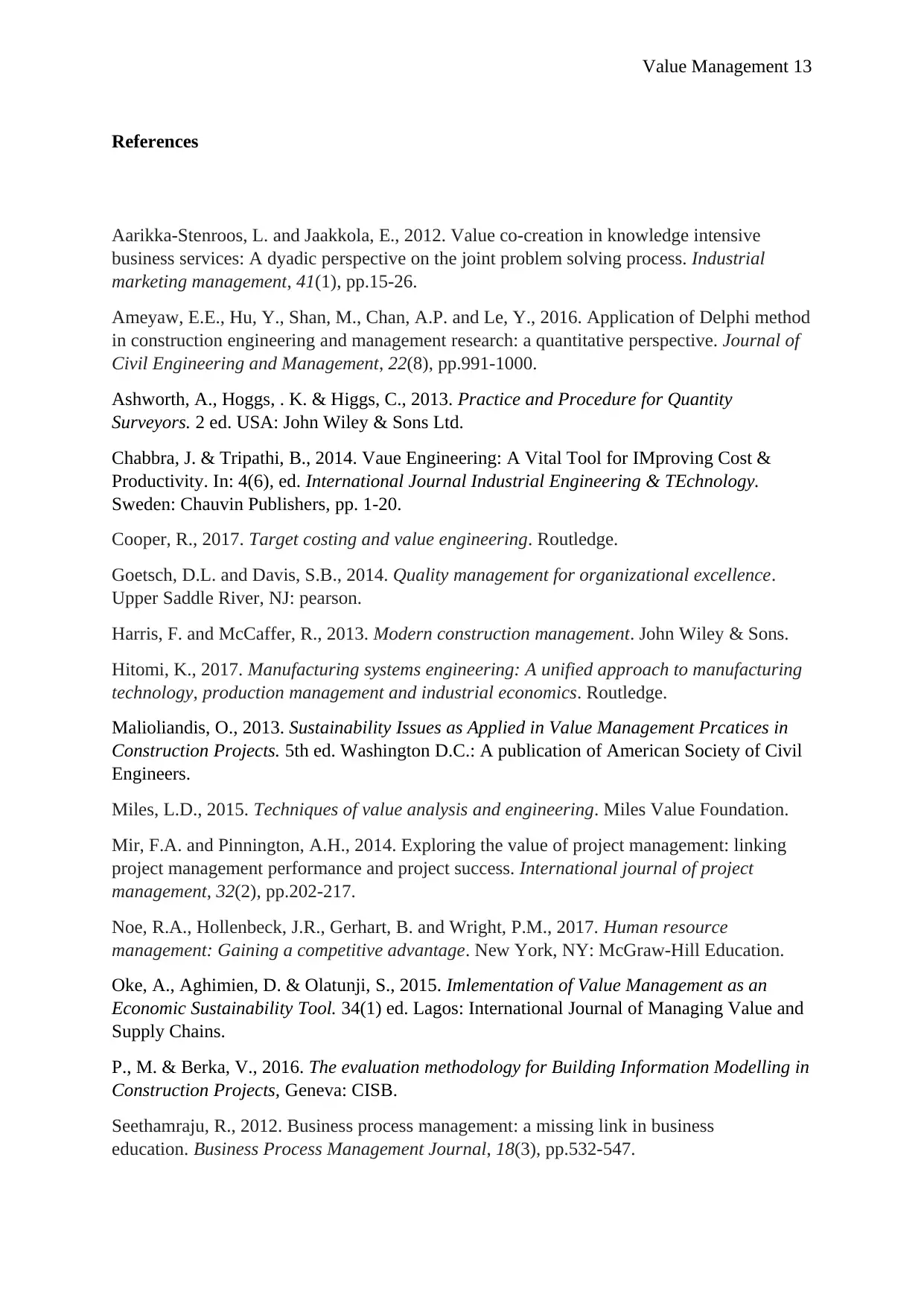
References
Aarikka-Stenroos, L. and Jaakkola, E., 2012. Value co-creation in knowledge intensive
business services: A dyadic perspective on the joint problem solving process. Industrial
marketing management, 41(1), pp.15-26.
Ameyaw, E.E., Hu, Y., Shan, M., Chan, A.P. and Le, Y., 2016. Application of Delphi method
in construction engineering and management research: a quantitative perspective. Journal of
Civil Engineering and Management, 22(8), pp.991-1000.
Ashworth, A., Hoggs, . K. & Higgs, C., 2013. Practice and Procedure for Quantity
Surveyors. 2 ed. USA: John Wiley & Sons Ltd.
Chabbra, J. & Tripathi, B., 2014. Vaue Engineering: A Vital Tool for IMproving Cost &
Productivity. In: 4(6), ed. International Journal Industrial Engineering & TEchnology.
Sweden: Chauvin Publishers, pp. 1-20.
Cooper, R., 2017. Target costing and value engineering. Routledge.
Goetsch, D.L. and Davis, S.B., 2014. Quality management for organizational excellence.
Upper Saddle River, NJ: pearson.
Harris, F. and McCaffer, R., 2013. Modern construction management. John Wiley & Sons.
Hitomi, K., 2017. Manufacturing systems engineering: A unified approach to manufacturing
technology, production management and industrial economics. Routledge.
Malioliandis, O., 2013. Sustainability Issues as Applied in Value Management Prcatices in
Construction Projects. 5th ed. Washington D.C.: A publication of American Society of Civil
Engineers.
Miles, L.D., 2015. Techniques of value analysis and engineering. Miles Value Foundation.
Mir, F.A. and Pinnington, A.H., 2014. Exploring the value of project management: linking
project management performance and project success. International journal of project
management, 32(2), pp.202-217.
Noe, R.A., Hollenbeck, J.R., Gerhart, B. and Wright, P.M., 2017. Human resource
management: Gaining a competitive advantage. New York, NY: McGraw-Hill Education.
Oke, A., Aghimien, D. & Olatunji, S., 2015. Imlementation of Value Management as an
Economic Sustainability Tool. 34(1) ed. Lagos: International Journal of Managing Value and
Supply Chains.
P., M. & Berka, V., 2016. The evaluation methodology for Building Information Modelling in
Construction Projects, Geneva: CISB.
Seethamraju, R., 2012. Business process management: a missing link in business
education. Business Process Management Journal, 18(3), pp.532-547.
Paraphrase This Document

Völter, M., Stahl, T., Bettin, J., Haase, A. and Helsen, S., 2013. Model-driven software
development: technology, engineering, management. John Wiley & Sons.

Appendices
Drawings of the proposed apartments
⊘ This is a preview!⊘
Do you want full access?
Subscribe today to unlock all pages.

Trusted by 1+ million students worldwide
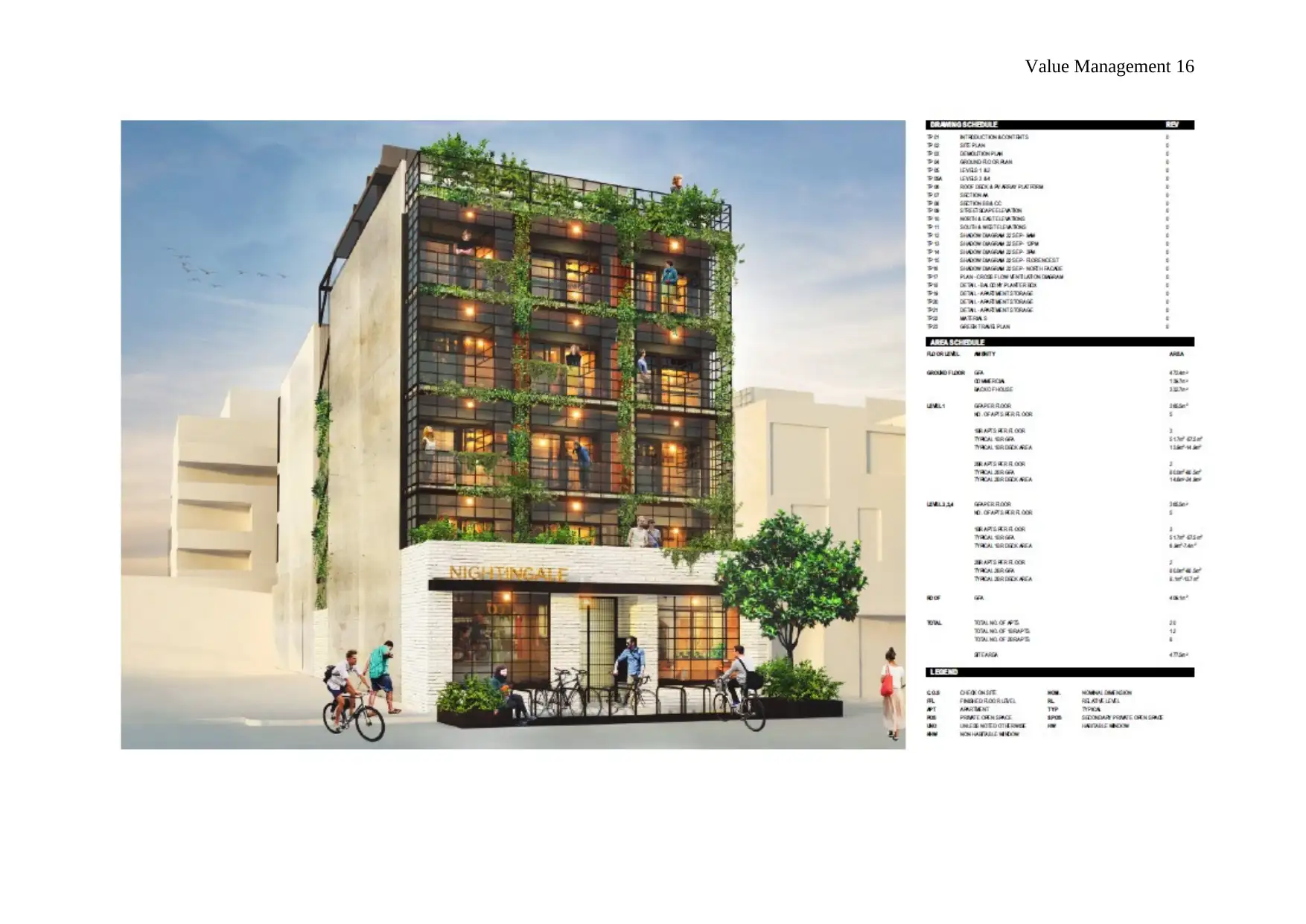
Paraphrase This Document
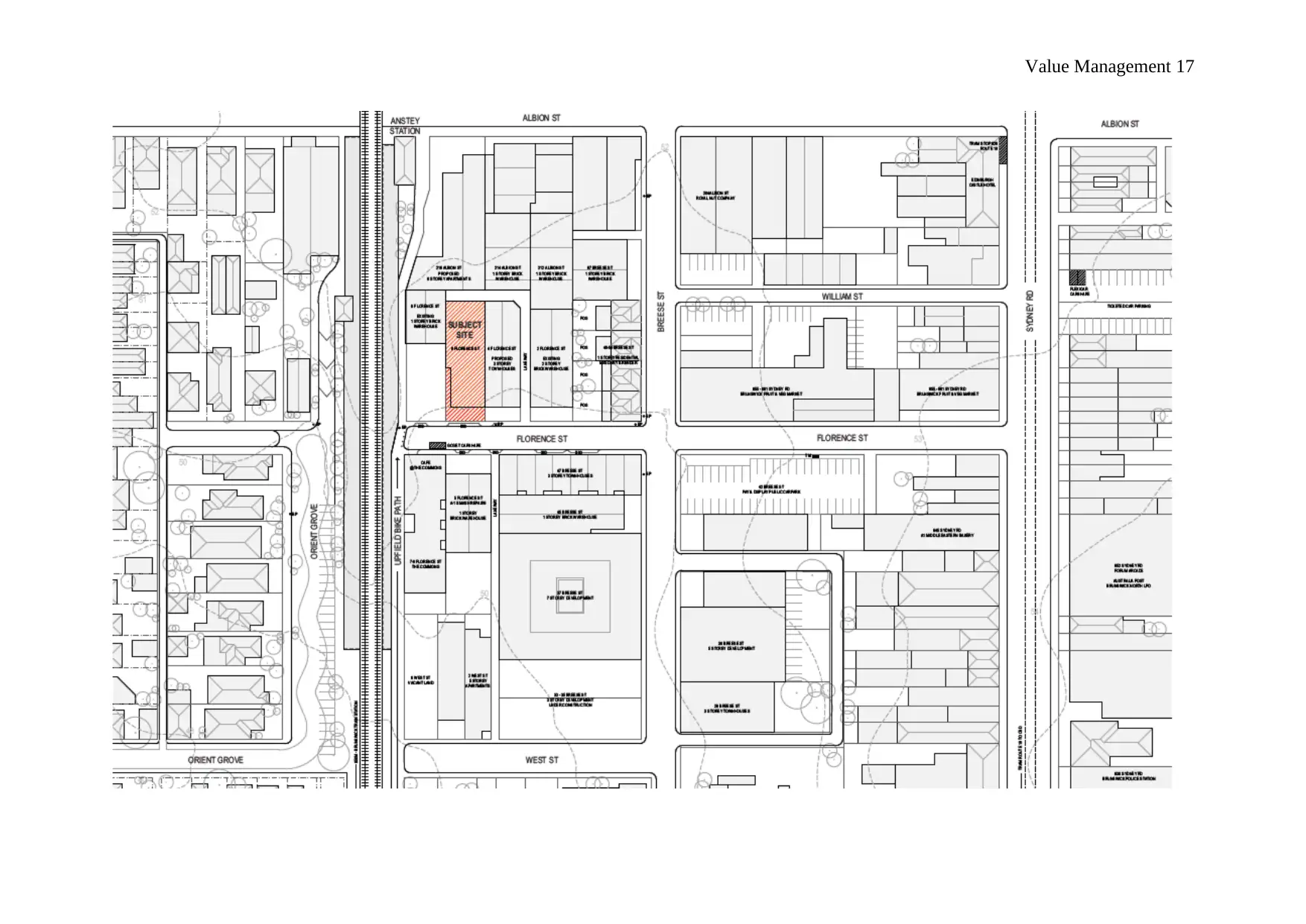
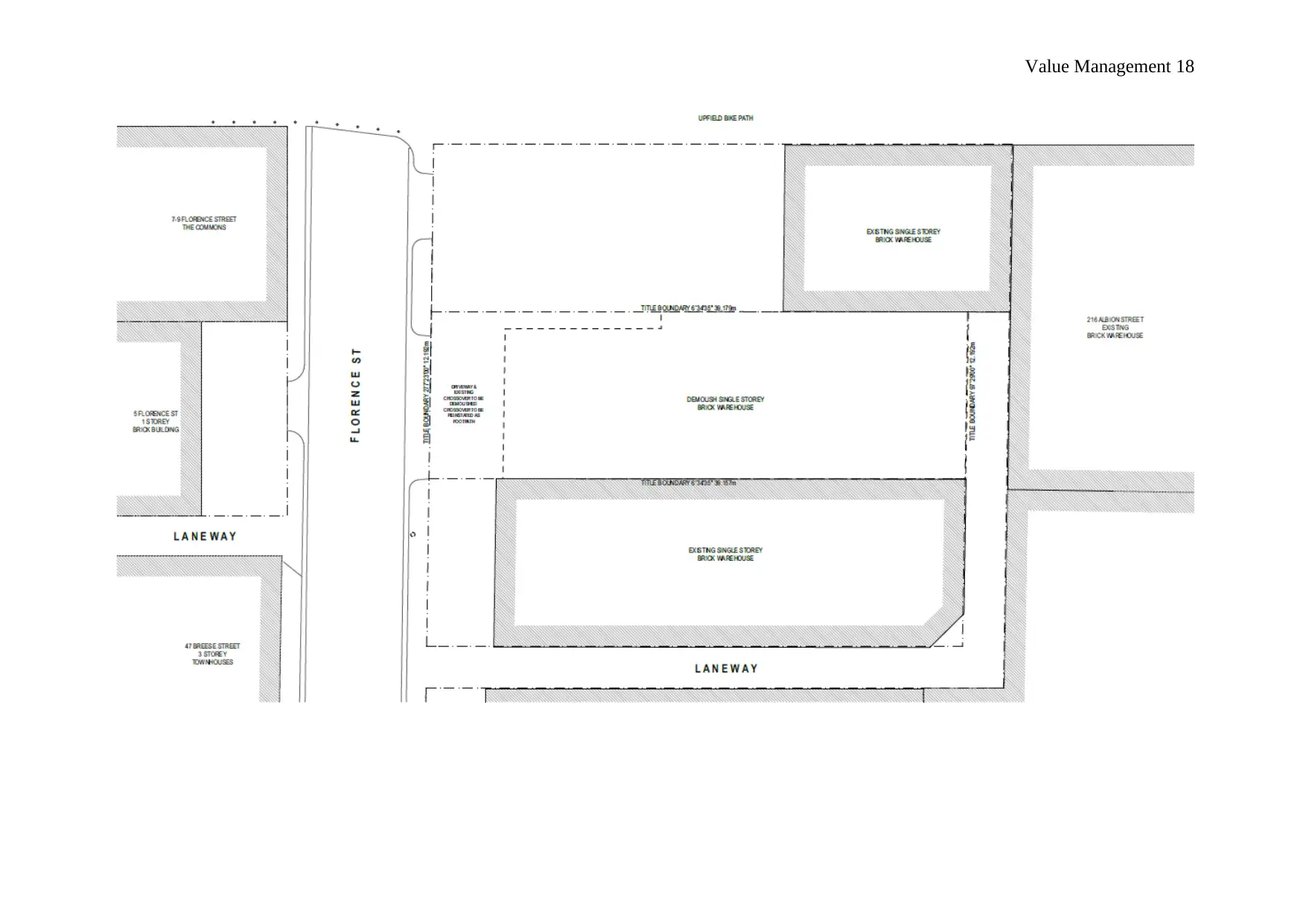
⊘ This is a preview!⊘
Do you want full access?
Subscribe today to unlock all pages.

Trusted by 1+ million students worldwide

Paraphrase This Document
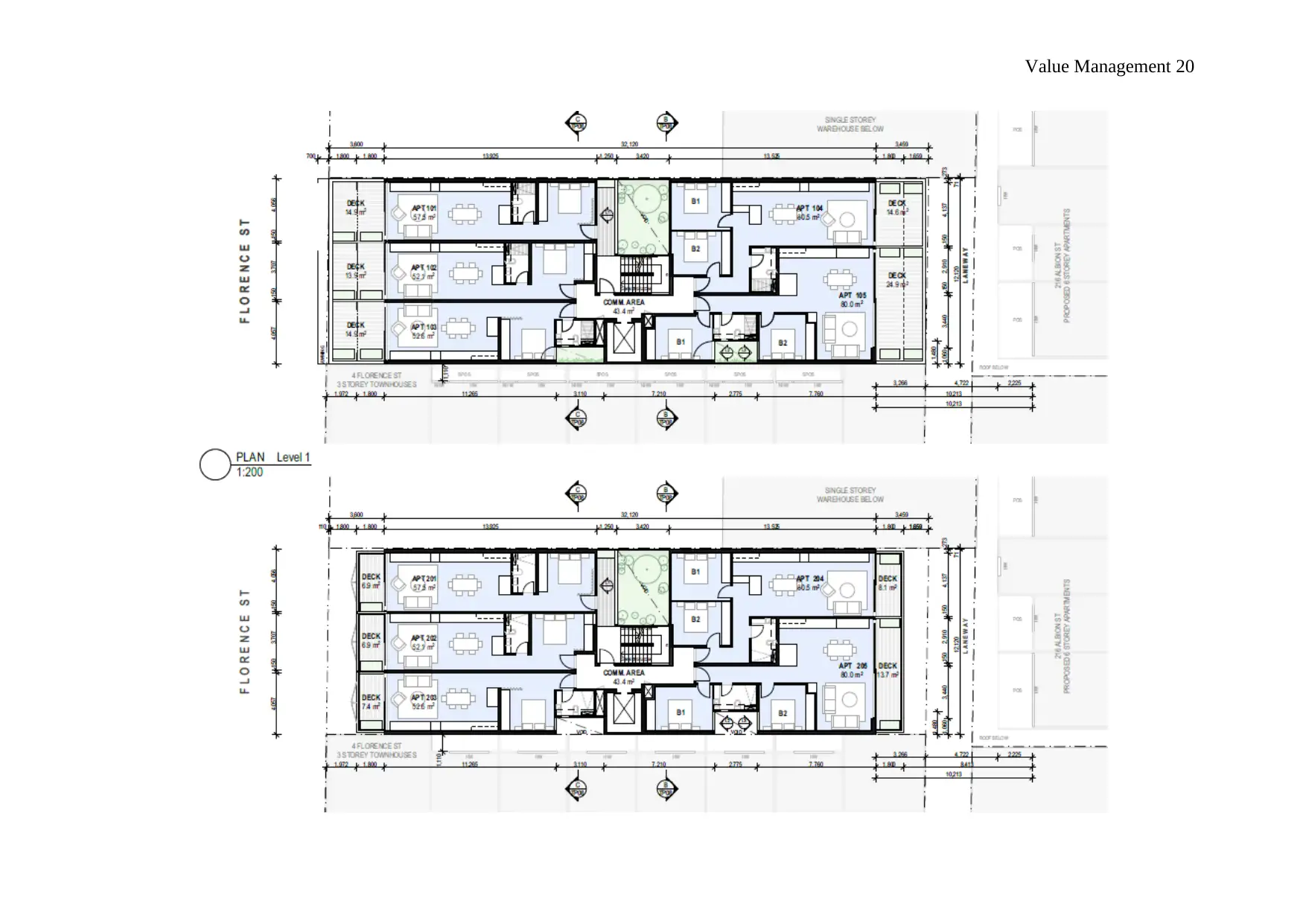
Related Documents
Your All-in-One AI-Powered Toolkit for Academic Success.
+13062052269
info@desklib.com
Available 24*7 on WhatsApp / Email
![[object Object]](/_next/static/media/star-bottom.7253800d.svg)
© 2024 | Zucol Services PVT LTD | All rights reserved.




